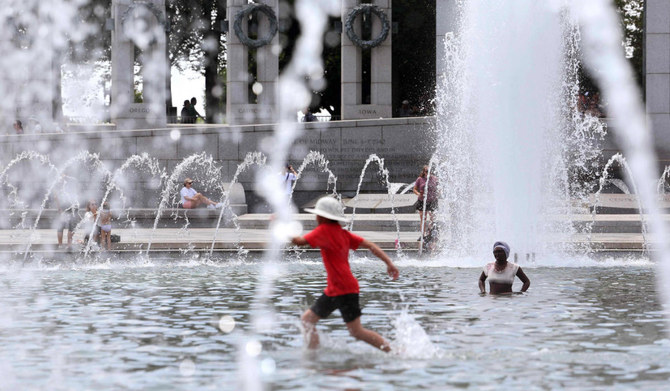SINGAPORE: The target of keeping long-term global warming within 1.5 degrees Celsius (2.7 Fahrenheit) is moving out of reach, climate experts say, with nations failing to set more ambitious goals despite months of record-breaking heat on land and sea.
As envoys gathered in Bonn in early June to prepare for this year’s annual climate talks in November, average global surface air temperatures were more than 1.5C above pre-industrial levels for several days, the EU-funded Copernicus Climate Change Service (C3S) said.
Though mean temperatures had temporarily breached the 1.5C threshold before, this was the first time they had done so in the northern hemisphere summer that starts on June 1. Sea temperatures also broke April and May records.
“We’ve run out of time because change takes time,” said Sarah Perkins-Kirkpatrick, a climatologist at Australia’s University of New South Wales.
As climate envoys from the two biggest greenhouse gas emitters prepare to meet next month, temperatures broke June records in the Chinese capital Beijing, and extreme heatwaves have hit the United States.
Parts of North America were some 10C above the seasonal average this month, and smoke from forest fires blanketed Canada and the US East Coast in hazardous haze, with carbon emissions estimated at a record 160 million metric tons.
In India, one of the most climate vulnerable regions, deaths were reported to have spiked as a result of sustained high temperatures, and extreme heat has been recorded in Spain, Iran and Vietnam, raising fears that last year’s deadly summer could become routine.
Countries agreed in Paris in 2015 to try to keep long-term average temperature rises within 1.5C, but there is now a 66 percent likelihood the annual mean will cross the 1.5C threshold for at least one whole year between now and 2027, the World Meteorological Organization predicted in May.
’QUADRUPLE WHAMMY’
High land temperatures have been matched by those on the sea, with warming intensified by an El Nino event and other factors.
Global average sea surface temperatures hit 21C in late March and have remained at record levels for the time of year throughout April and May. Australia’s weather agency warned that Pacific and Indian ocean sea temperatures could be 3C warmer than normal by October.
Global warming is the major factor, said Piers Forster, professor of climate physics at the University of Leeds, but El Nino, the decline in Saharan dust blowing over the ocean and the use of low-sulfur shipping fuels were also to blame.
“So in all, oceans are being hit by a quadruple whammy,” he said. “It’s a sign of things to come.”
Thousands of dead fish have been washing up on Texan beaches and heat-induced algal blooms have also been blamed for killing sea lions and dolphins in California.
Warmer seas could also mean less wind and rain, creating a vicious circle that leads to even more heat, said Annalisa Bracco, a climatologist at the Georgia Institute of Technology.
Though this year’s high sea temperatures are caused by a “perfect combination” of circumstances, the ecological impact could endure, she said.
“The ocean is going to have a very slow response as it accumulates (heat) slowly but also keeps it for very long.”


























